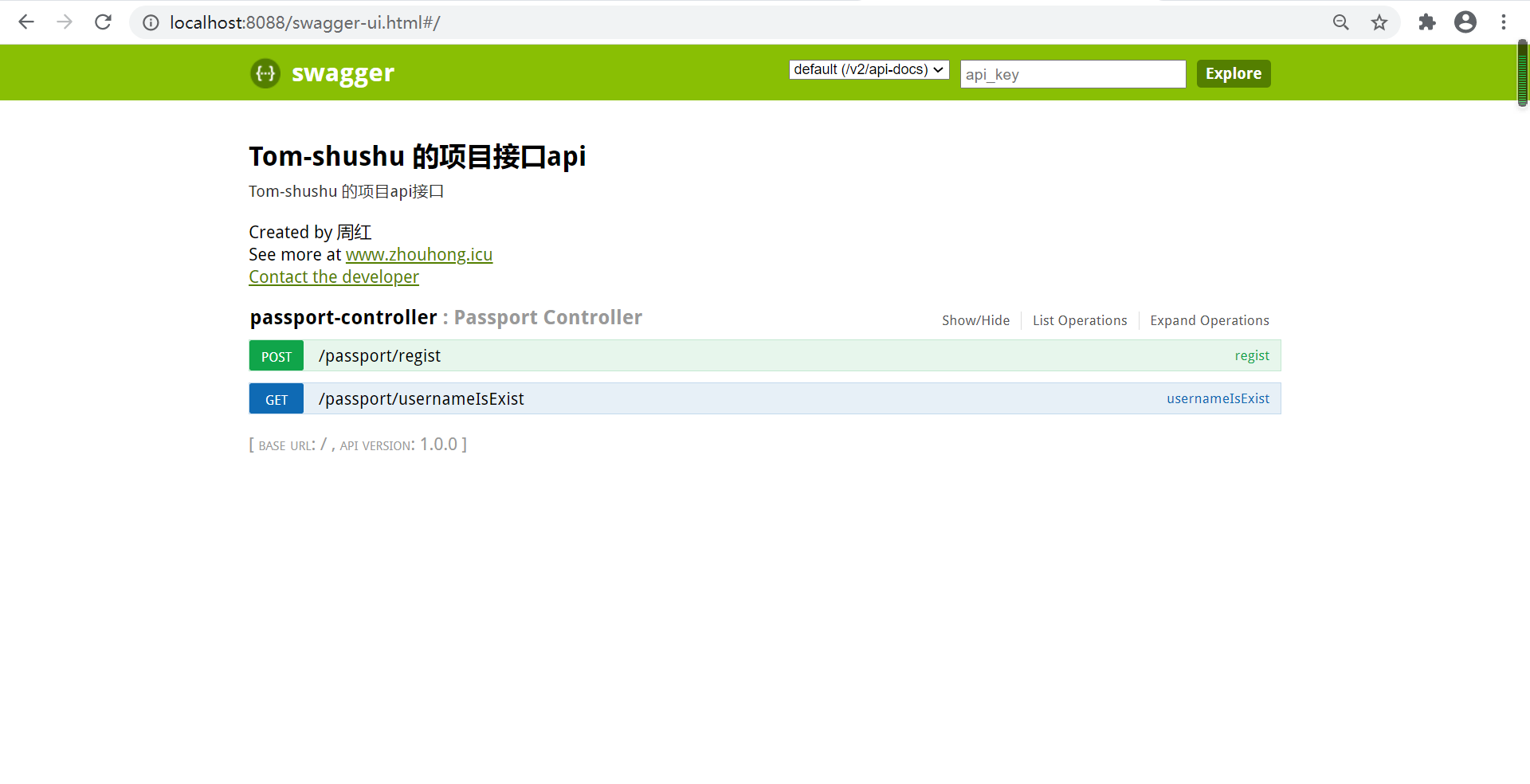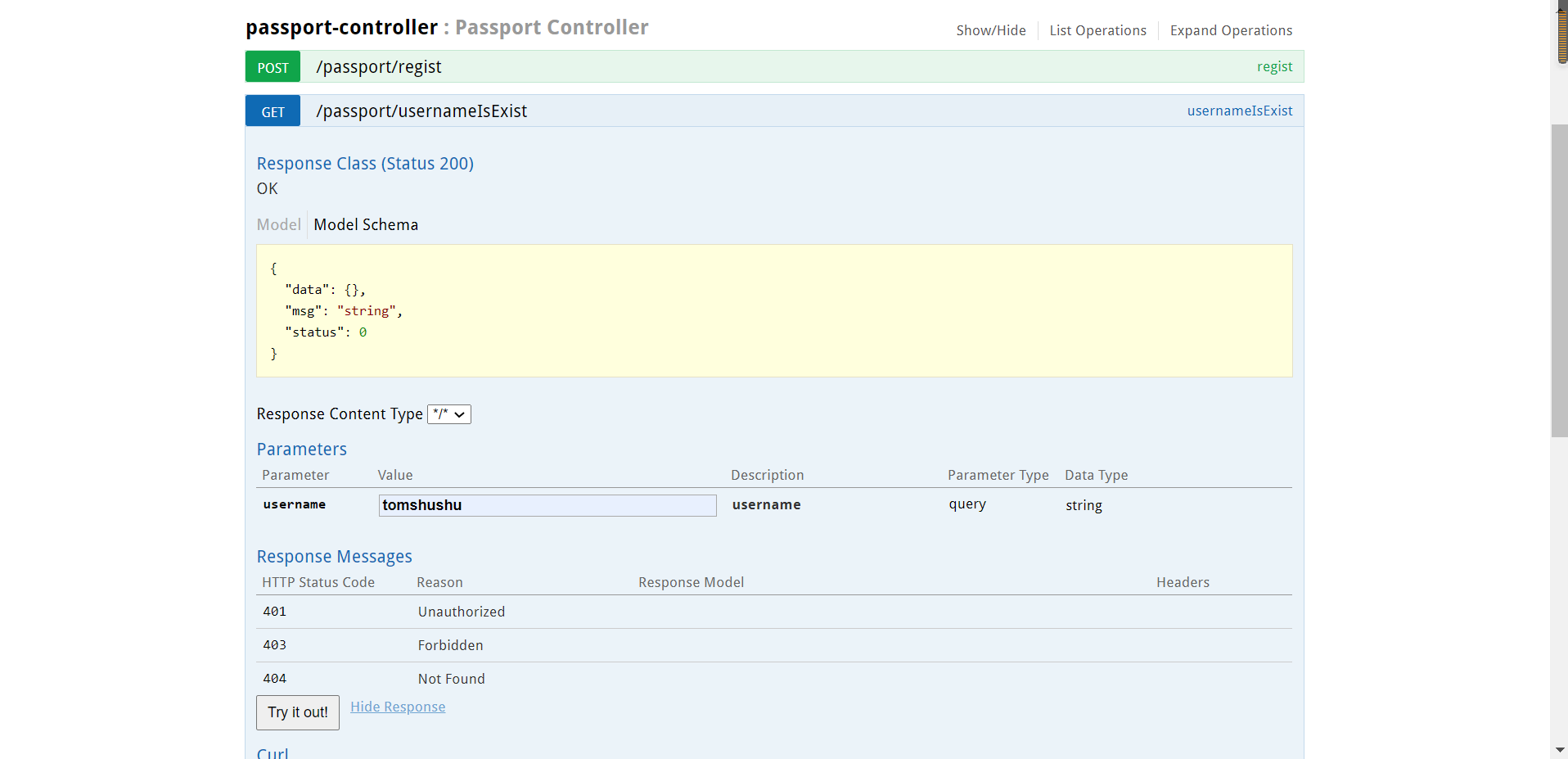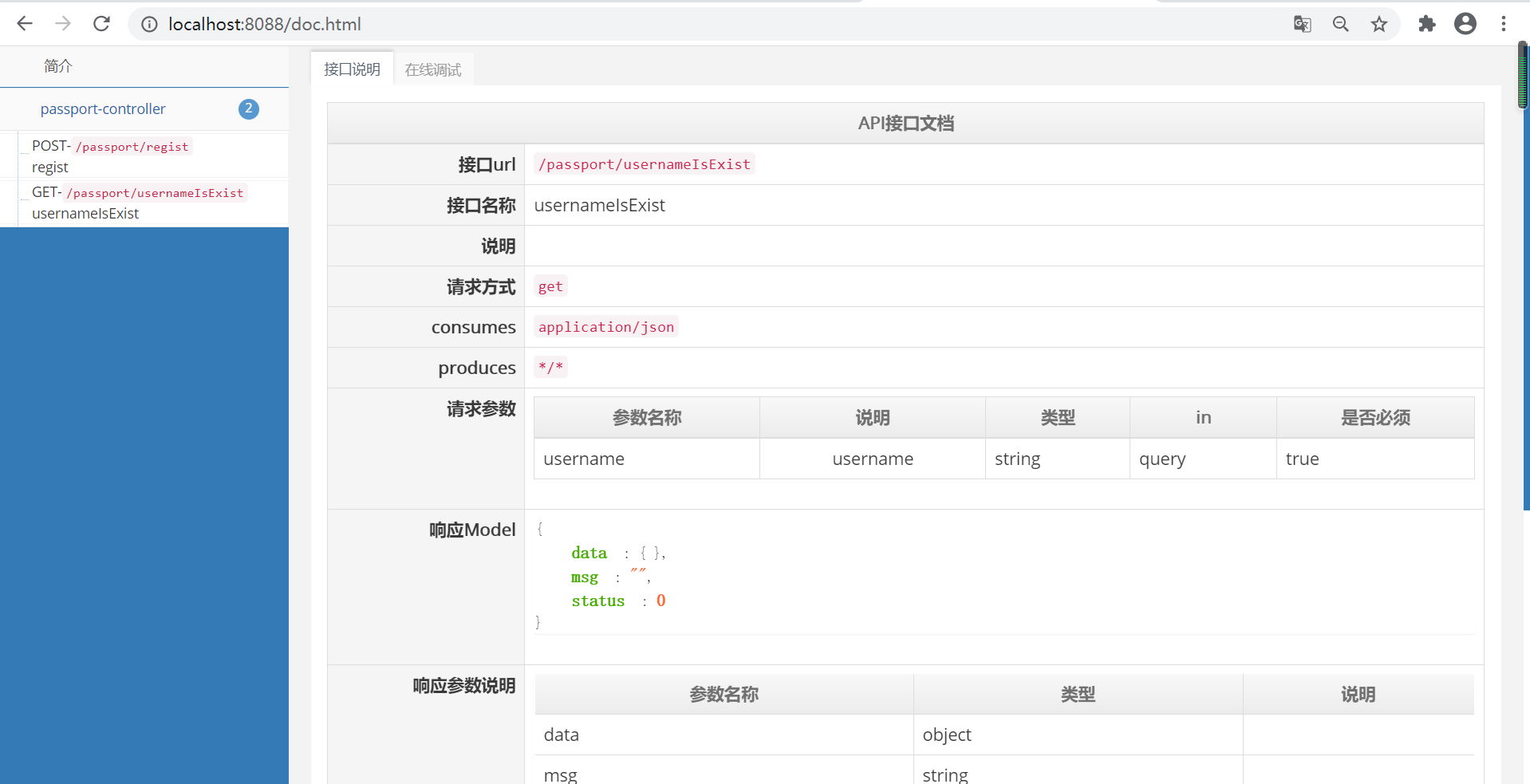您好,登錄后才能下訂單哦!
您好,登錄后才能下訂單哦!
本篇文章給大家分享的是有關Swagger2如何在SpringBoot中使用,小編覺得挺實用的,因此分享給大家學習,希望大家閱讀完這篇文章后可以有所收獲,話不多說,跟著小編一起來看看吧。
當下很多公司都采取前后端分離的開發模式,前端和后端的工作由不同的工程師完成。在這種開發模式下,維持一份及時更新且完整的 Rest API 文檔將會極大的提高我們的工作效率。傳統意義上的文檔都是后端開發人員手動編寫的,相信大家也都知道這種方式很難保證文檔的及時性,這種文檔久而久之也就會失去其參考意義,反而還會加大我們的溝通成本。而 Swagger 給我們提供了一個全新的維護 API 文檔的方式。
1、代碼變更,文檔跟著代碼變、只需要少量的注解Swagger就可以根據代碼自動的生成API文檔,很好的保證了文檔的實時性。
2、跨語言,Swagger支持40多種語言。
3、Swagger UI 呈現出來的是一份可以交互的API文檔,我們可以直接在文檔頁面嘗試API的調用,省去了準備復雜的調用參數的過程。
4、還可以將文檔規范導入相關的工具里面(例如:Postman、SoapUI)、這些工具將會為我們自動地創建自動化測試。
1、在項目pom.xml里面加入Swagger2相關的依賴
<!--swagger2配置--> <dependency> <groupId>io.springfox</groupId> <artifactId>springfox-swagger-ui</artifactId> <version>2.4.0</version> </dependency> <dependency> <groupId>io.springfox</groupId> <artifactId>springfox-swagger2</artifactId> <version>2.4.0</version> </dependency> <dependency> <groupId>com.github.xiaoymin</groupId> <artifactId>swagger-bootstrap-ui</artifactId> <version>1.6</version> </dependency>
2、新建Swagger2的配置類
package com.zhouhong.config;
import org.springframework.context.annotation.Bean;
import org.springframework.context.annotation.Configuration;
import springfox.documentation.builders.ApiInfoBuilder;
import springfox.documentation.builders.PathSelectors;
import springfox.documentation.builders.RequestHandlerSelectors;
import springfox.documentation.service.ApiInfo;
import springfox.documentation.service.Contact;
import springfox.documentation.spi.DocumentationType;
import springfox.documentation.spring.web.plugins.Docket;
import springfox.documentation.swagger2.annotations.EnableSwagger2;
/**
* @ClassName: Swagger2
* @Description:
* @Author: 周紅
* @NickName: Tom-shuhu
* @Date: Created in 2020/12/15
**/
@Configuration
@EnableSwagger2
public class Swagger2 {
// http://localhost:8088/swagger-ui.html 原路徑
// http://localhost:8088/doc.html 原路徑
//配置swagger2核心配置
@Bean
public Docket createRestApi(){
return new Docket(DocumentationType.SWAGGER_2) //指定api類型位swagger2
.apiInfo(apiInfo()) //用于定義api文檔匯總信息
.select().apis(RequestHandlerSelectors
.basePackage("com.zhouhong.controller")) //指定生成文檔的controller
.paths(PathSelectors.any())
.build();
}
private ApiInfo apiInfo(){
return new ApiInfoBuilder()
.title("Tom-shushu 的項目接口api") //文檔標題
.contact(new Contact("周紅", //作者
"www.zhouhong.icu",
"15249239025@163.com")) //聯系人
.description("Tom-shushu 的項目api接口")//詳細信息
.version("1.0.0")//文檔版本號
.termsOfServiceUrl("www.zhouhong.icu")//網站地址
.build();
}
}文檔配置說明:
a.為任何接口生成API文檔,這種方式不必在接口方法上加任何注解,方便的同時也會因為沒有添加任何注解所以生成的API文檔也沒有注釋,可讀性不高。
@Bean
public Docket createRestApi(){
return new Docket(DocumentationType.SWAGGER_2)
.apiInfo(apiInfo())
.select()
//為任何接口生成API文檔
.apis(RequestHandlerSelectors.any())
.paths(PathSelectors.any())
.build();
}b.為當前配置的包下controller生成API文檔
.apis(RequestHandlerSelectors.basePackage("com.troila"))c.為有@Api注解的Controller生成API文檔
.apis(RequestHandlerSelectors.withClassAnnotation(Api.class))
d.為有@ApiOperation注解的方法生成API文檔
.apis(RequestHandlerSelectors.withMethodAnnotation(ApiOperation.class))
@Api:修飾整個類,描述Controller的作用 @ApiOperation:描述一個類的一個方法,或者說一個接口 @ApiParam:單個參數描述 @ApiModel:用對象實體來作為入參 @ApiProperty:用對象接實體收參數時,描述對象的一個字段 @ApiResponse:HTTP響應其中1個描述 @ApiResponses:HTTP響應整體描述 @ApiIgnore:使用該注解忽略這個API @ApiError :發生錯誤返回的信息 @ApiImplicitParam:一個請求參數 @ApiImplicitParams: 多個請求參數
1、使用原路徑訪問

2、原路徑調試

3、doc模式訪問

4、doc模式調試

以上就是Swagger2如何在SpringBoot中使用,小編相信有部分知識點可能是我們日常工作會見到或用到的。希望你能通過這篇文章學到更多知識。更多詳情敬請關注億速云行業資訊頻道。
免責聲明:本站發布的內容(圖片、視頻和文字)以原創、轉載和分享為主,文章觀點不代表本網站立場,如果涉及侵權請聯系站長郵箱:is@yisu.com進行舉報,并提供相關證據,一經查實,將立刻刪除涉嫌侵權內容。